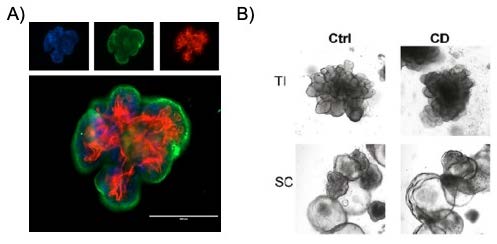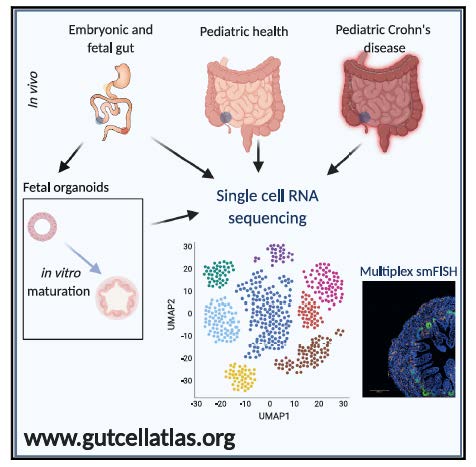Research
The Zilbauer group's main research interest lies in the field of human intestinal epithelial stem cell biology during development, health and related diseases such as Inflammatory Bowel Diseases (IBD) and Necrotising Enterocolitis (NEC). A particular focus lies on the role of role of epigenetic mechanisms (i.e. DNA methylation) in regulating gene expression and cellular function of the human intestinal epithelium and the implication of epigenetic (re)programming on development and disease pathogenesis.
As one of the main experimental models we use human mucosa derived intestinal epithelial organoids. Over the past 5 years, the Zilbauer Group have generated a large living biobank of organoids derived from a wide range of patients (including healthy controls) as well as children diagnosed with Inflammatory Bowel Diseases and other related conditions. Organoids were generated from different gut segments, patients form different age groups as well as human fetal gut. All organoid lines are accompanied by detailed clinical phenotype information of the donor and many have been subjected to multi-omic molecular profiling and genotyping. The biobank provides a unique resource for the lab's research as well as a range of collaborative projects.
In addition to organoids derived from intestinal mucosal samples, induced pluripotent stem cells (iPSCs) can be differentiated into intestinal epithelium, which is the subject of an ongoing collaboration with the Vallier group.
More recently, they have been subjecting both primary human gut biopsy samples as well as patient derived organoids to single cell RNA sequencing and spatial transcriptomics (Figure 2, Elmentaite and Ross et al, Developmental Cell 2020). Computational analyses of data allow us to not only interrogate in-vivo cell transcription but also further validate human gut organoids by comparing cell identities on a single cell level.
Figure 1: Human Intestinal Epithelial Organoids (IEOs) derived from A) Small bowel biopsy and stained for Nuclei (blue), epithelial cell marker EpCAM (green) and actin (red), B) from the Terminal Ileum (TI) and Sigmoid Colon (SC) of children newly diagnosed with Crohn’s Disease (CD) and healthy controls (Ctrl).
Figure 2: Single-Cell Sequencing of Developing Human Gut Reveals Transcriptional Links to Childhood Crohn’s Disease, Elmentaite and Ross et al, Developmental Cell 2021.




